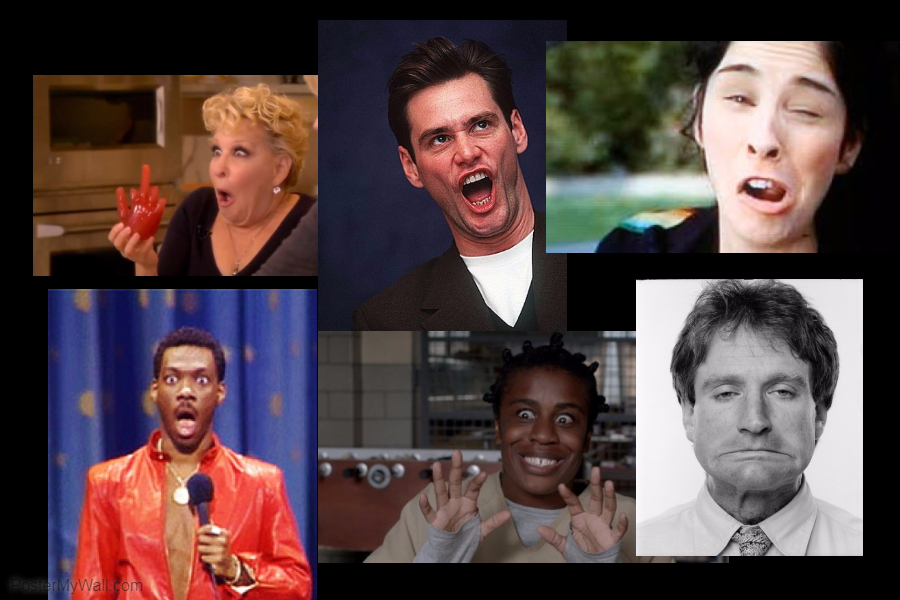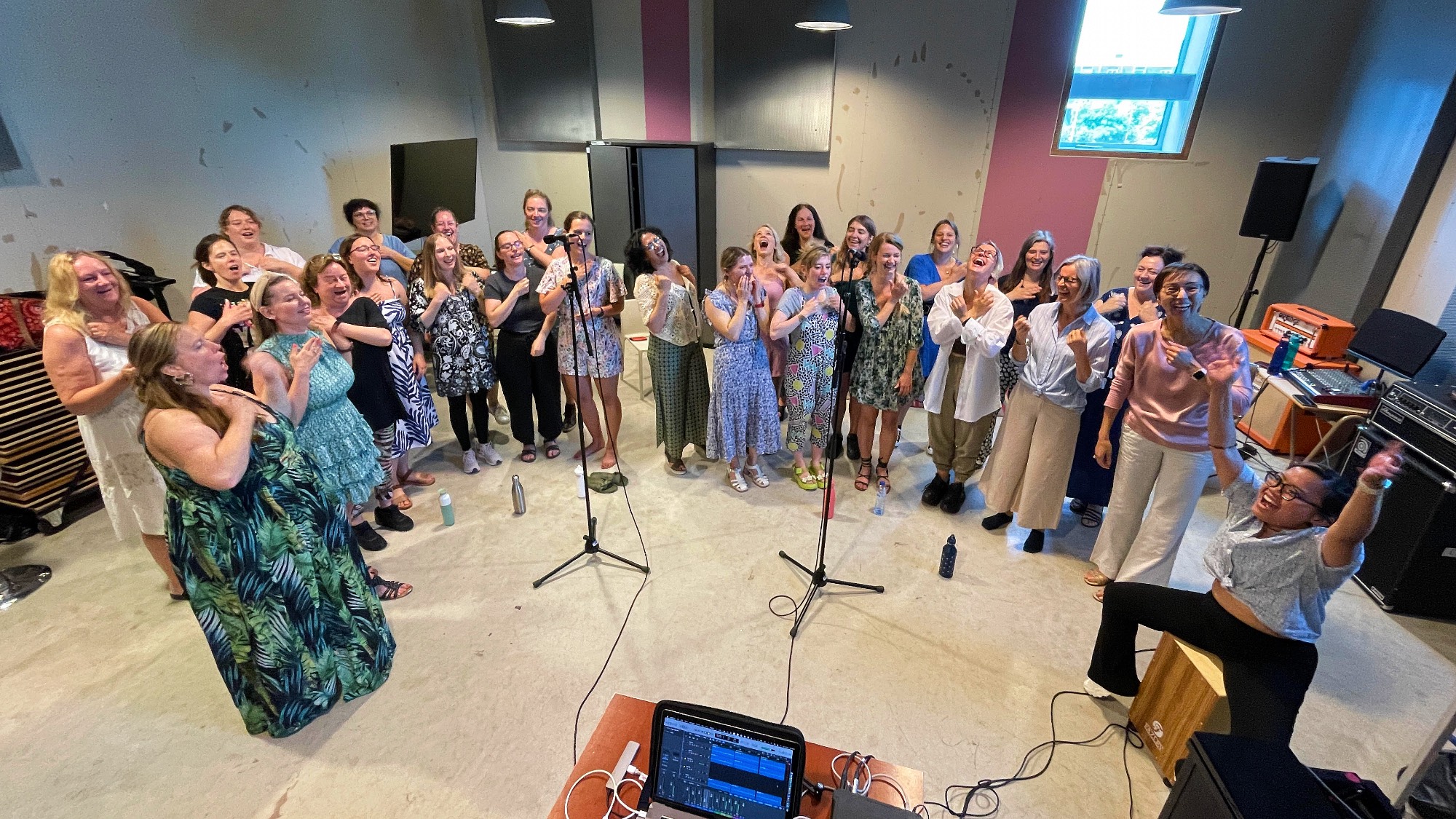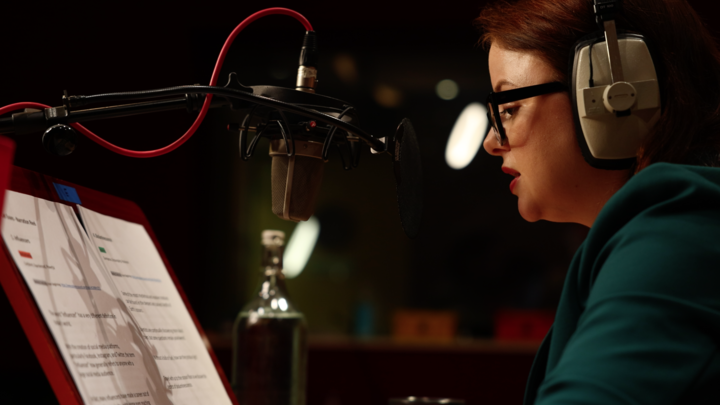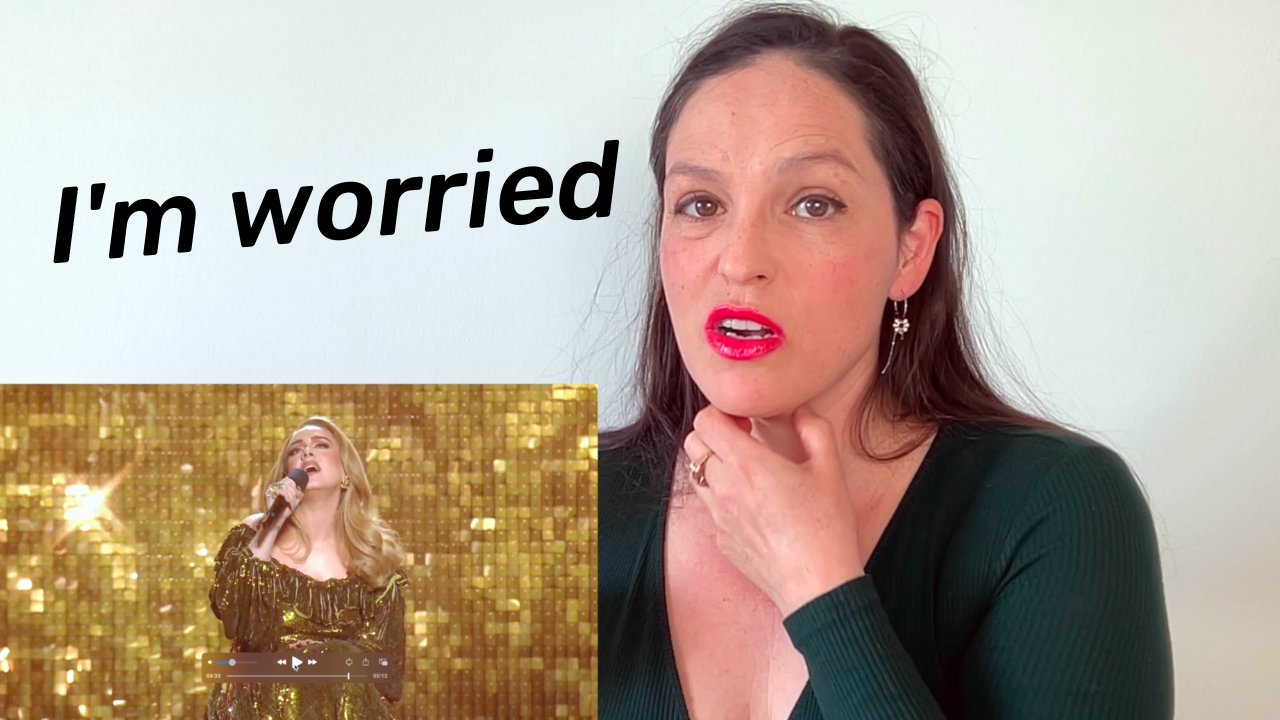What do you see in this photo? A bunch of people making foolish faces…most of them comedians… A-ha… anything else? I see great singing potential!

I put it to you it is not a coincidence. Singing, most teachers will agree, requires some flexibility of the facial muscles. “Think of the mask, Florence!” said the great vocal coach Maesto Edwards to Meryl Streep in the movie “Florence Foster Jenkins”. Well, that did not help Florence, perhaps, but it sure does help Meryl to slightly lift her cheek when she sings. Frankly, she sings pretty damn well.
Lifting the cheeks to better use the head resonance is only one aspect of facial activity that could be beneficial to the singer. We’ll get back to that. Suffice to say, for now, that some would perceive these activities to be… a tad ridiculous-looking.
We don’t want to look ridiculous when we sing! We take our performance seriously. And so we often avoid activating our facial expressions, so we don’t look weird. Being too passive and immobile can make us tense up and thus not achieve the full potential of our voice.
Sometimes we know we should activate the face, but we’re unaware of the fact we actually don’t do it! We might wanna look like this:

But end up looking like this:

(Here I would remind you all again that you should use a mirror while practicing!)
The ways in which to activate the face
Having an immobile face, closed jaw, droopy cheeks and fixed facial muscles altogether is not only non-beneficial to singing, but it is also unattractive to the audience. The audience likes to see something happening. I’m not saying you should make all those faces seen above on stage necessarily, but your face should be activated in a few ways:
- There should always be some space between your jaws (except for brief moment when they come together to make a consonance).
- If you want head voice, your cheeks should be slightly lifted.
- Nothing should be fixed in one place, but flexible and relaxed. Even if you are not moving it a lot, it should be nice and loose. That helps preventing tension in the jaw and tongue, and consequently, the neck, so you don’t choke yourself while you sing.
There are more faces that could help with releasing the sound, but if you have all the three items above, you WILL sing better, especially if you practice an extreme version of those. You’ll eventually know your body well enough to achieve the same results without the extreme faces. Then you can perform with a tamer expression.
The three habits above – and more – are a way of life for some comedians and actors, who make a living altering their facial expressions. If you still don’t believe that it helps them sing, let’s check out a few examples of extreme face makers, and then discuss a few points:
All of the performers in the video above are good at making faces. Some are even better at making noises – cool! Stretching the “normal” way of physical and vocal expression, I believe, is key to discovering more of the voice inside us. Not all of the performers above are professional singers, but they all could be, and quite easily, if you ask me.
So, think about it. When making your facial muscles flexible a habit, to the point of making a fool of yourself, two things will happen: a) people will probably laugh hard and love it. b) You will sing well! OMG, I think we’ve just cracked the code.
Are you convinced that there is a connection between making a fool of yourself and singing well? Why don’t you take it home, experiment with funny faces, and see what comes of it!
Any questions? Opinions? Leave them in the comments.
Also read my related article about how performance exercises will save your ass.






Definitely right!
Nothing to be afraid of anymore. People will probably laugh.. so what? Make some funny faces is not such a big deal. Plus, who doesn’t enjoy to laugh a little?
I like how you put things on the table and I truly believe that the points you make are very accurate. Almost impossible for me to sing when I hold negative feelings and making funny faces is undoubtedly one of my favorite ways to quickly get rid of these feelings.
The more I read your articles the more I feel that I can sing well!
Oh you dear man, thank you for saying that. I am so glad you agree about this, I also find it very important to take things lightly from time to time. But you also use just the right amount of seriousness! Keep at it 🙂
awesome!!!!!